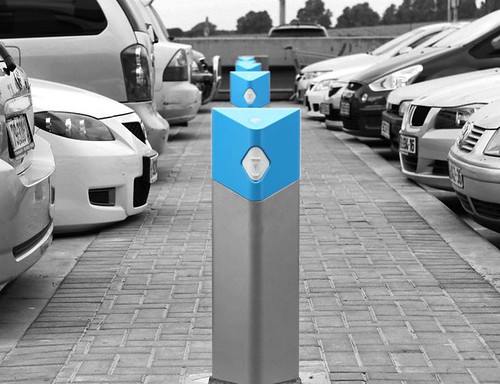Happy Birthday! Volvo’s 3-Point Safety Seat Belt Turns 50; Keeps on Saving Millions of Lives on the Road
(Source: Wired, CNET & Consumer Reports)
Volvo made history — and the world a far safer place — 50 years ago today when it delivered the world’s first car with standard three-point safety belts.
And it all started with a Volvo PV544 delivered to a dealership in the town of Kristianstad, Sweden. The three-point belt was invented by Volvo engineer Nils Bohlin, who was looking for a better way of keeping people secure in a collision.
Before the three-point belt, there was the basic lap belt. This two-point design did a good job of keeping passengers in their seats during a collision, but it failed to evenly disperse crash forces resulting in a bruised forehead or–at high speeds–a possible fractured pelvis.
The three-point design, developed by Volvo, a company fanatical about safety and engineer Nils Bohlin, more evenly spread impact forces across the passenger’s torso and helped to keep the upper body in place. Bohlin, a former aviation engineer at Saab who worked on airplane catapult seats, came up with an ingenious solution that combined a lap belt with a diagonal belt across the chest. He anchored the straps low beside the seat so the geometry of the belts formed a “V” with the point directed at the floor. The design was created to help absorb the force on the pelvis and chest, while keeping the belt in position and not moving under the load.
Even after 50 years of automotive safety innovation, the three-point safety belt remains the most effective protection for occupants in the event of a collision. The belt reduces the risk of fatalities and serious injuries from collisions by about 50 percent. A design as obvious as it is intelligent, the three-point belt is perfectly suited to the seat occupant’s body. It is the safety belt’s ability to keep the occupant in the seat that is of crucial importance.
We take them for granted nowadays, but the three-point belt was revolutionary when it appeared on Aug. 13, 1959. In the years since, the V-shaped safety belt has saved well over a million lives. It has been called one of the most significant inventions of the 20th century, and it remains the most widely used safety innovation in automotive history. Every single car sold today uses three-point belts. Here are some facts dug from various sources on the internet, which I thought are very interesting:
- In 1963, Volvo introduced the three-point belt in the United States after performing a number of crash tests that validated their claims that it offered the best protection to occupants. In 1967, the Swedish automaker presented data from collisions in Volvo cars over a one-year period that found the seat belt saved lives and reduced injuries by 50-60 percent. That same year, Volvo offered the seat belt as standard on front and rear outboard seats.
- Within five years, three-point belts appeared in cars throughout Europe and the U.S. Bohlin’s invention has saved hundreds of thousands of lives and prevented or reduced the severity of injuries for countless people. That makes the three-point safety belt the single most important safety device in the 120-year history of the automobile.
- The real breakthrough in legislation actually came from Victoria, Australia, which was the first state worldwide to draw up legislation in 1970 requiring not just the fitting of seatbelts, but also their actual use. In the first year of law, traffic deaths in the state dropped by 18 per cent.
- Consumer Reports blog states that in the year 2006, the use of seat belts saved an estimated 15,383 lives. During the five-year period from 2002 through 2006, seat belts have saved over 75,000 lives.
- Currently all U.S. states except New Hampshire have seat belt laws. However, 18 states do not have primary enforcement laws, meaning penalties can only be applied if the car is pulled over for another infraction. Studies show that stronger laws lead to higher use rates. Seat belt use continues to climb in the United States with 83 percent of all occupants buckling up.
What’s even more interesting is that neither Volvo nor Mercedes kept their inventions to themselves, and in fact encouraged other automakers to adopt the safety devices. Thank you, Mr. Bohlin and Volvo for making our world a little more safer.
Click here to read more.











